The Cahn–Hilliard Equation with Generalized Mobilities in Complex Geometries
Abstract
In this study, we apply a finite difference scheme to solve the Cahn–Hilliard equation with generalized mobilities in complex geometries. This method is conservative and unconditionally gradient stable for all positive variable mobility functions and complex geometries. Herein, we present some numerical experiments to demonstrate the performance of this method. In particular, using the fact that variable mobility changes the growth rate of the phases, we employ space-dependent mobility to design a cylindrical biomedical scaffold with controlled porosity and pore size.
1. Introduction
Many studies on the CH equation have assumed that the mobility is constant; however, the equation was originally formulated with degenerate mobility [1]. Numerical methods and simulations with variable mobility can be easily found (for example [8–11]). Kim [12] showed the effect of space-dependent mobility (M(x, y) = 0.01 + 0.99y) on phase separation through a numerical example, which is shown in Figure 1.
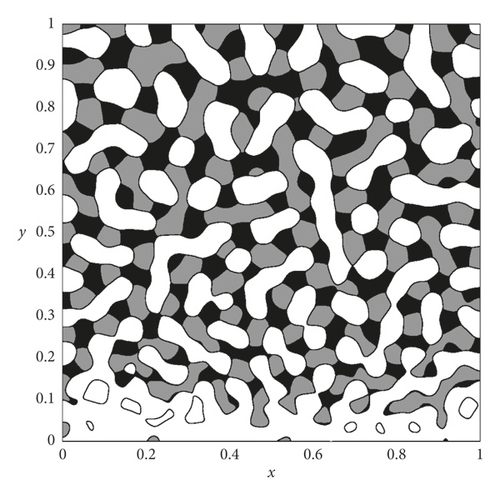
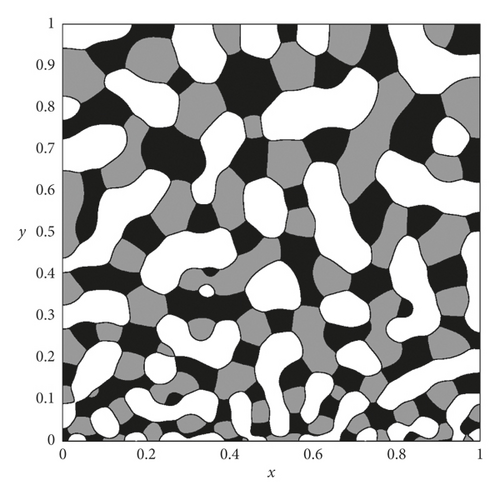
Variable mobility changes the rate of phase separation and the coarsening process. This observation motivated us to employ space-dependent mobility to the manufacturing of a biomedical scaffold because many researchers have recently demonstrated that adaptive porosity and pore size are important requirements for a scaffold [13, 14]. A general scaffold has been constructed with a uniform pattern [15–17]. However, various types of biomedical scaffolds have also been proposed to provide reinforcing features [18, 19].
To numerically design a biomedical scaffold, we require an algorithm that can deal with complex geometry. Thus, we consider a simple and efficient method that was proposed in [20]. In this paper, we completely prove the energy stability of the proposed method with variable mobility. Applying space-dependent mobility, we have a concrete result for a cylindrical scaffold with control of both porosity and pore size.
The remainder of this paper is organized as follows. In Section 2, we describe our numerical method for the CH equation with variable mobility in arbitrarily shaped domains. In Section 3, several numerical experiments are reported. Finally, conclusions are presented in Section 4.
2. Numerical Methods
For simplicity, we describe the numerical algorithm in the two-dimensional space, and then its three-dimensional discretization is analogously defined. To solve the given equations in the complex domain, we use the boundary control function G introduced in [20], which we have described below. The summation by parts formula is shown with the proposed inner products. Owing to this formula, we can simply prove the mass conservation and the decreasing of the energy functional.
2.1. Boundary Control Function
Given an arbitrary domain Ωin and its boundary Γ = ∂Ωin, we take a rectangular domain Ω = (0, Lx) × (0, Ly) embedding Ωin. Let Ωout = Ω/Ωin be outside of Ωin (see Figure 2(a)).
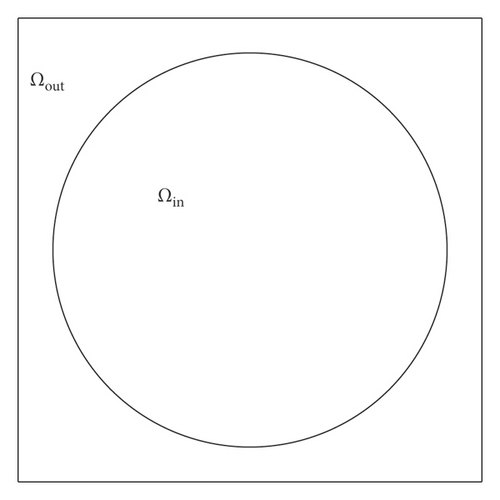
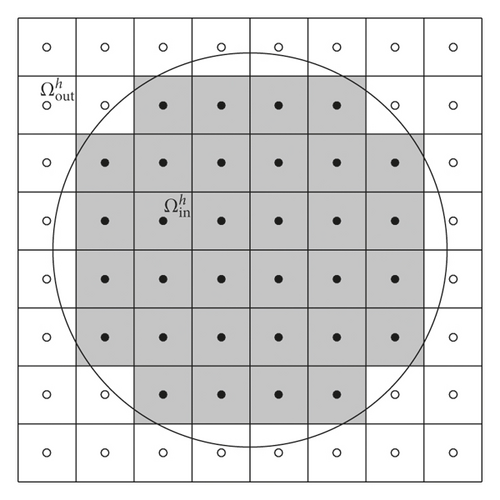
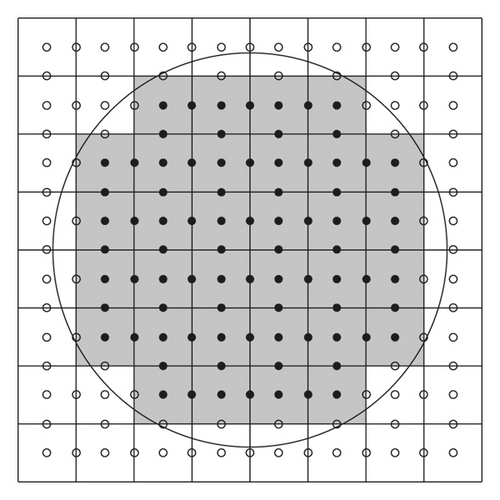
At the edge, G is defined as Gi+(1/2),j = GijGi+1,j and Gi,j+(1/2) = GijGi,j+1, see Figure 2(c). By defining the boundary control function G, we can reuse the multigrid algorithm which is natural to the rectangular domain.
Figure 3 shows that , which is an approximation of the circular disk domain Ωin, converges to Ωin as we refine the mesh size.
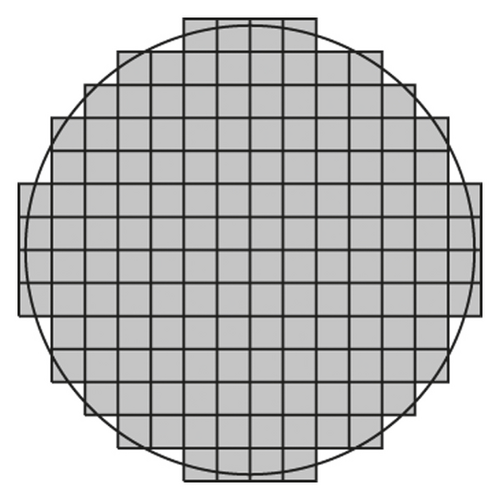


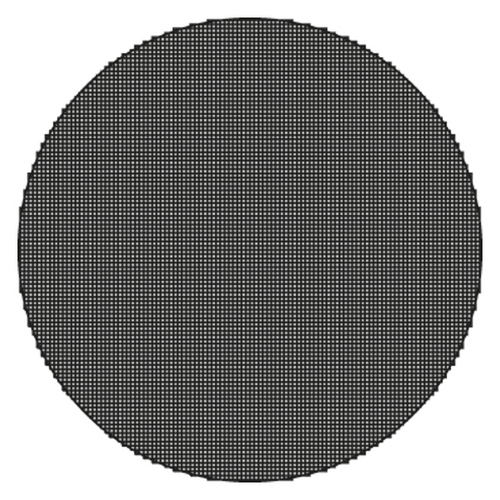
2.2. Inner Products and Mass Conservation
2.3. Energy Dissipation
Therefore, we can conclude that the schemes of equations (8) and (9) are unconditionally gradient stable.
3. Numerical Experiments
First, we report a two-dimensional simulation to numerically demonstrate the mass conservation and energy dissipation. Next, we present the numerical results which highlight different evolutions with constant and space-dependent mobilities in a rectangular domain. Finally, we report the numerical experiments on spinodal decomposition in the spherical and cylindrical domains.
The system is solved via the multigrid method [23]. For details on the restriction and prolongation operators in the complex domain with the multigrid method, please refer to [20].
3.1. Mass Conservation and Energy Dissipation
Figure 4 shows the evolution of the scaled energy functional and average concentration, which implies that the total discrete energy is nonincreasing and the mass is preserved. The insets show the evolution of the concentration field at the times marked by closed circles.
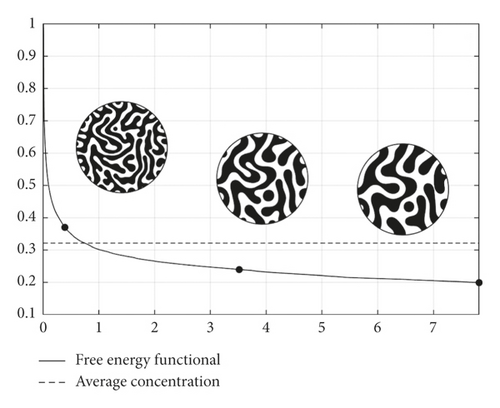
3.2. Rectangular Domain with a Space-Dependent Mobility
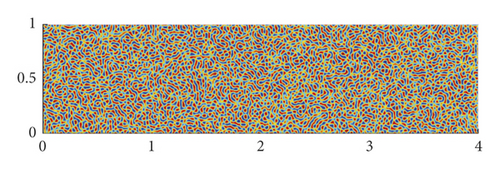
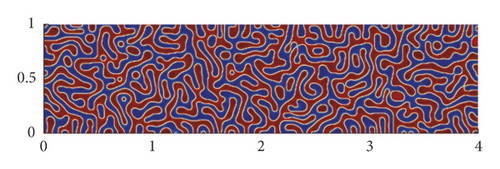
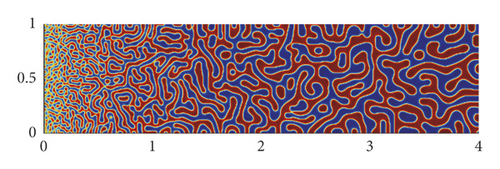
3.3. Stability Test
The domain Ωin is a disk whose radius is 0.45 and center is (0.5, 0.5). Variable mobility M(x, y, cn) = x2|cn(1 − cn)| is employed in the computational domain Ω = (0,1) × (0,1). Other parameters are taken as h = 1/256, ϵ = 0.002, and T = 8.
Figure 6 shows the evolution of the scaled discrete energy for various time steps. All the curves are nonincreasing and imply that the numerical solutions are energy stable. We note that a time delay occurs if we use a large time step, as shown in Figure 7.
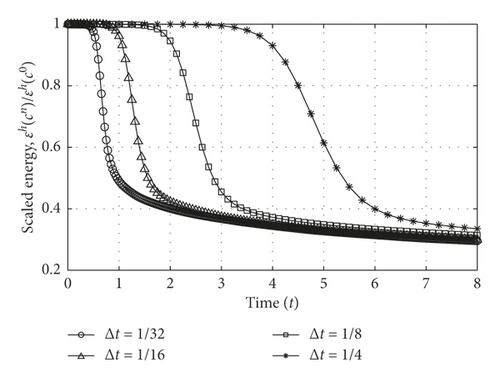
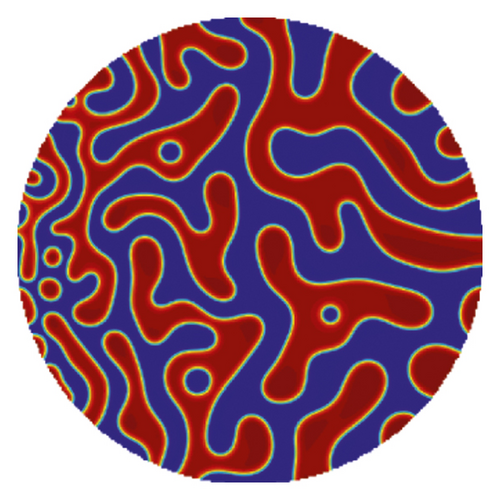
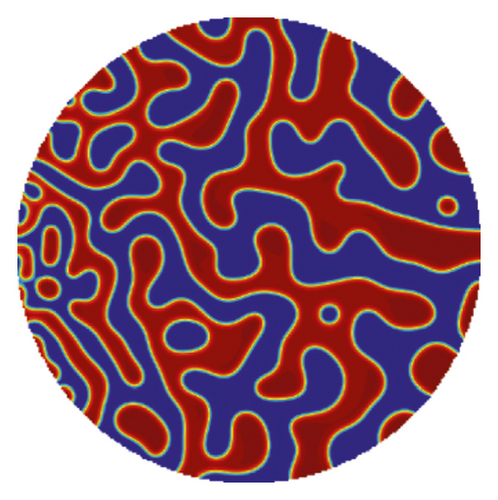
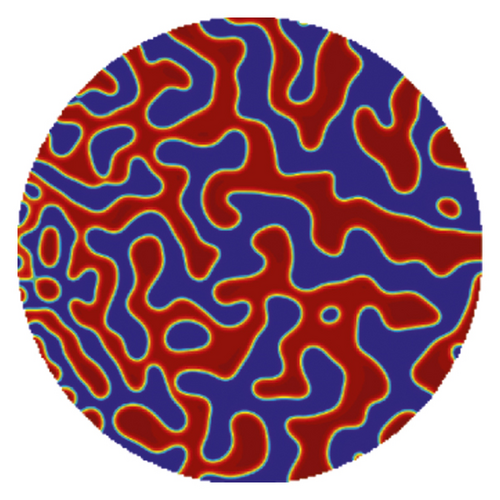
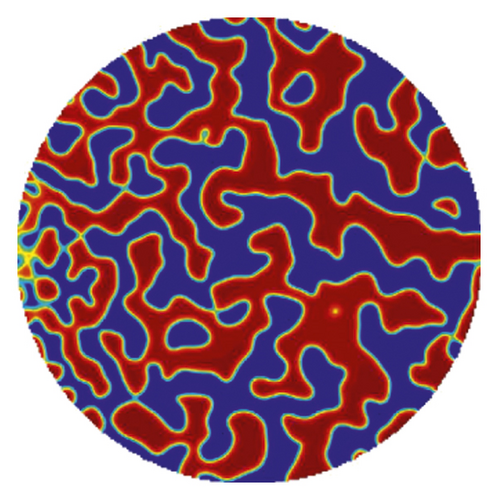
3.4. Spherical Domain with a Space-Dependent Mobility
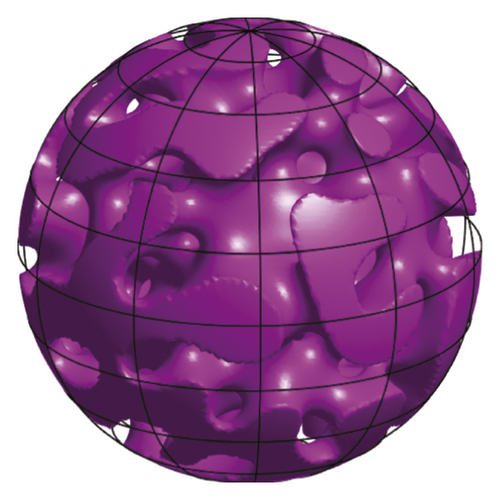
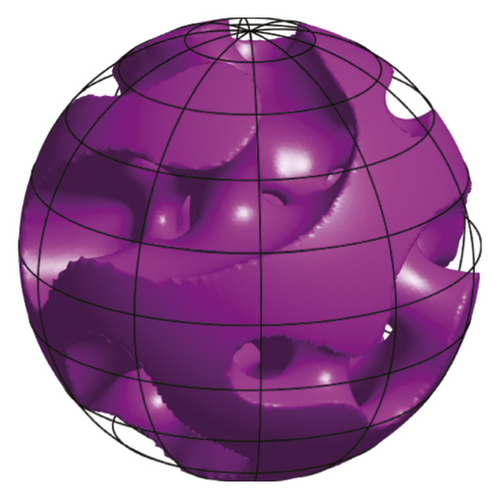
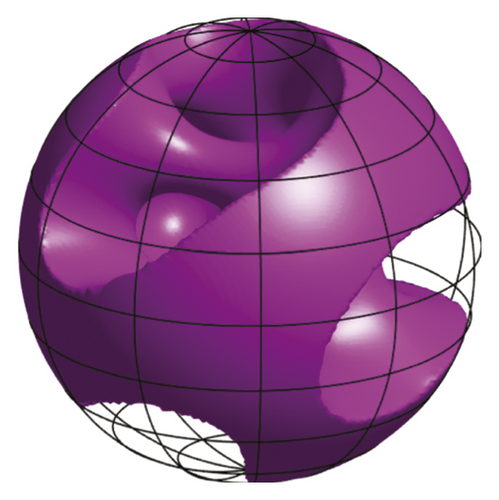
Figure 9 shows the isosurfaces of internal domains with various radii at t = 4. We can show that the phase domain is getting thinner; however, the local average concentration is almost completely preserved.
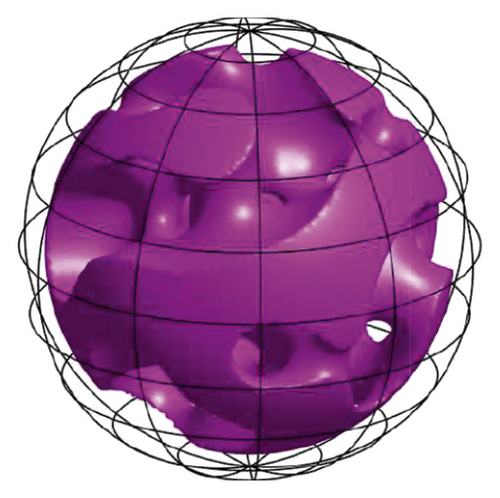
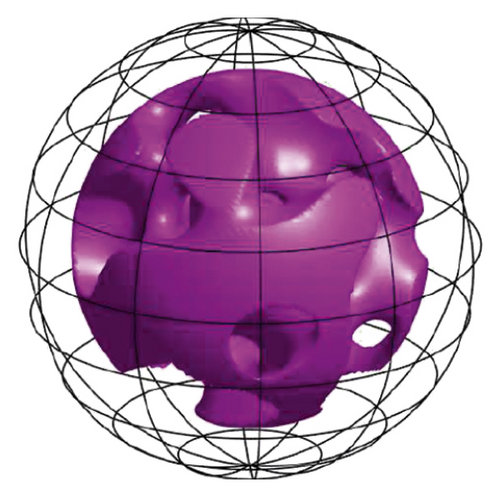
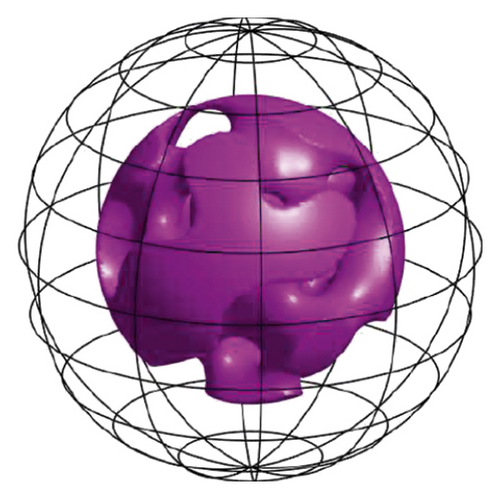
3.5. Application to Design the Scaffold
In this section, we consider manufacturing a cylindrically shaped biomedical scaffold for the application of space-dependent mobility. This is motivated by [13] which indicates that a proper spatial gradient of concentration is required for effective regeneration of tissues and organs. Figure 10(a) shows the PCL/F127 cylindrical scaffold, which has a gradient on the concentrations along the longitudinal direction. As shown in Figures 5 and 9, the space-dependent mobility in the CH equation gives the ability to control both the porosity and pore size of the scaffold.
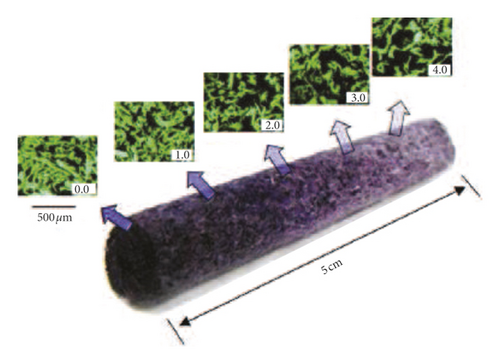
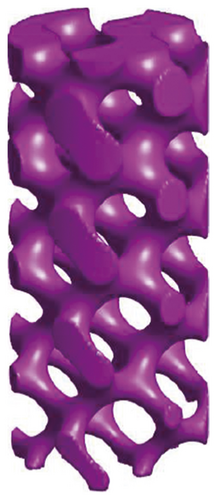
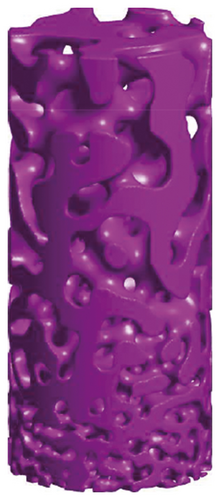
To highlight the variation of pore size in Figure 10(c), we also present cross-sectional images at various heights in Figure 11. In this figure, the red, green, and blue regions indicate c = 1, 0.5, and 0, respectively.
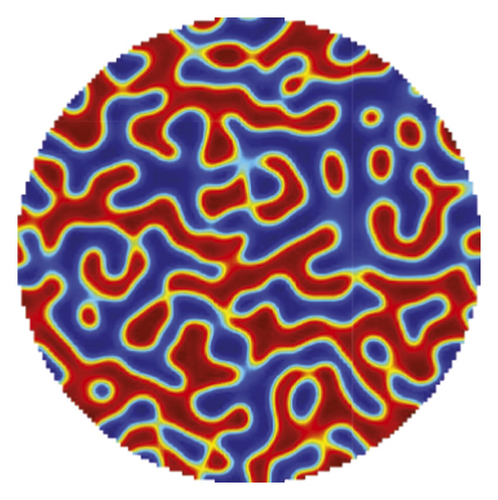
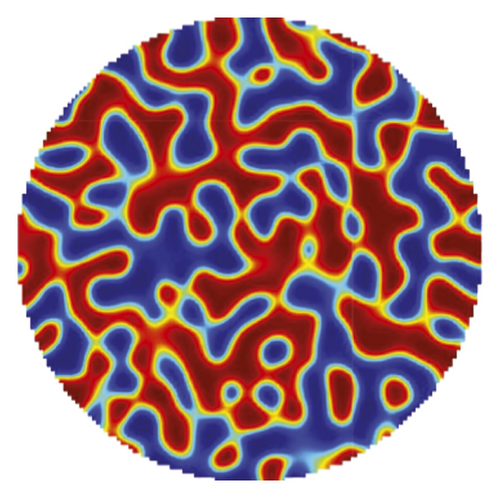

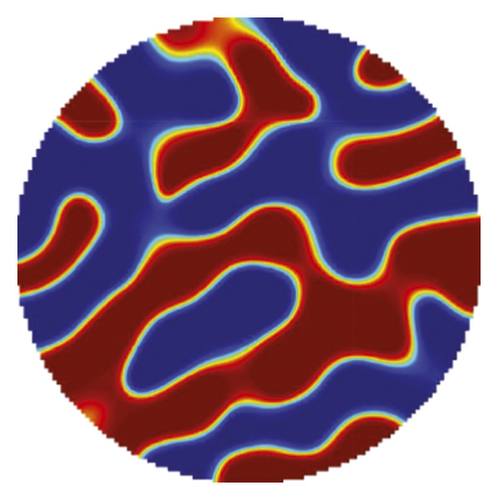
While Figure 11 shows the dynamical variation of the pore size, Figure 12 shows that the porosity of all cross sections is near 50%. Consequently, both the porosity and pore size can be simultaneously controlled by applying phase separation with space-dependent mobility, as shown in Figure 10(c).
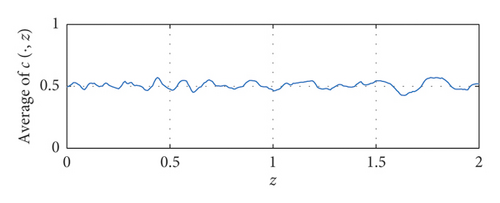
4. Conclusions
We proposed a conservative and stable finite difference method to solve the CH equation with variable mobility in complex geometries. We proved that the numerical scheme is conservative and energy dissipative for any time step size. In addition, the CH equation with space-dependent mobility was considered. The two- and three-dimensional numerical results show that local length scale in phase separations can be controlled by using space-dependent mobilities. We expect that space-dependent mobility can be applied to the fabrication of scaffolds to control both local pore size scale and porosity.
Conflicts of Interest
The authors declare that they have no conflicts of interest.
Acknowledgments
J. Shin was supported by the Basic Science Research Program through the National Research Foundation of Korea (NRF) and funded by the Korean Government, Ministry of Education (2017R1D1A1B0-3032422). J. S. Kim expresses thanks for the support from the BK21 PLUS program.
Open Research
Data Availability
No data were used to support this study.




